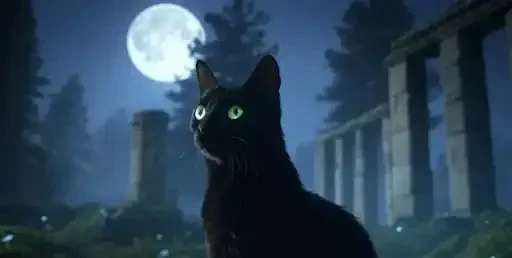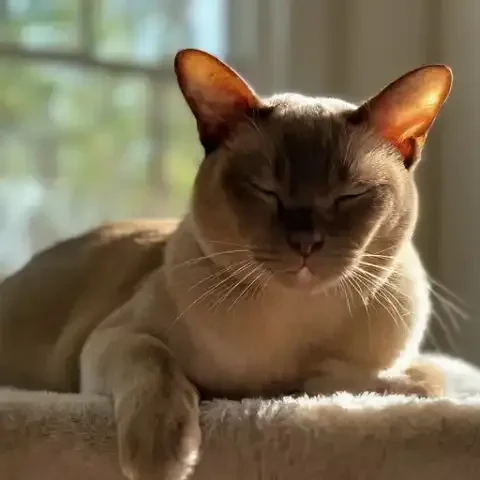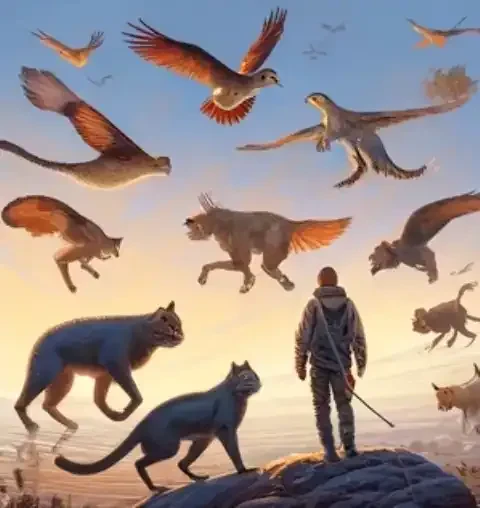Step beyond the everyday purrs that rumble like tiny engines and the playful pounces that scatter dust motes in sunbeams, and you will discover a world where cats are not merely pets, but potent symbols, mystical guides, and creatures deeply steeped in ancient magic and folklore. For millennia, these enigmatic beings, with their silent grace and independent spirits, have walked alongside humanity, not merely as companions warming hearths and chasing shadows, but as figures of profound mystery, whispered about in hushed tones around crackling fires, believed to hold the subtle, unseen keys to realms beyond our everyday perception. Welcome, then, to the magical world of cat folklore, a realm woven from ancient beliefs and enduring wonder, where the ordinary feline transforms into something altogether extraordinary.
From the earliest days of domestication, when wild creatures cautiously approached human settlements, seeking warmth and sustenance, it was the cat, with its inherent air of self-possession and keen, nocturnal eyes, that captured the human imagination in a uniquely potent way. They were practical guardians of stores, yes, but also something more – creatures of twilight, moving with a silent grace that hinted at secrets beyond the grasp of daylit reason. This fascination, born from a relationship spanning centuries, has blossomed into a rich tapestry of folklore, a collection of beliefs, myths, and superstitions that paints the feline not just as a domestic animal, but as a being imbued with supernatural qualities, possessing an uncanny intuition, and holding a subtle, yet undeniable, connection to the unseen. Cats, in this light, become more than just fur and purrs; they transform into living conduits to a world brimming with magic and mystery.
This article invites you to embark on an enchanting exploration into this magical world of cat folklore. We will trace the delicate threads of feline mystique back to their ancient origins, delving into the diverse tapestry of cultural beliefs that have sprung up across continents and civilizations. From the sacred temples of ancient Egypt to the whispered tales of European witchcraft, and beyond to the modern myths that flicker across the internet’s vast expanse, we will uncover the enduring reasons why cats have been so deeply intertwined with magic, myth, and wonder for countless centuries. Prepare to be enchanted as we unravel the captivating lore of felines, and perhaps, in doing so, glimpse a little of the magic that still whispers in every purr.
Ancient Echoes: Cats as Gods and Sacred Creatures - The Roots of Feline Mystique
To understand the enduring mystique of cats in folklore, we must first journey back to the ancient world, to civilizations where felines were not merely respected companions, but revered as deities, and seen as sacred creatures. Nowhere is this ancient reverence more pronounced and richly documented than in Ancient Egypt, a land where cats were not just beloved pets, but divine figures walking amongst mortals. Here, the feline form took on a sacred significance, embodied in powerful goddesses who reigned over aspects of life both earthly and divine.
Chief among these feline deities was Bastet, the graceful and benevolent goddess often depicted with the head of a domestic cat. Bastet represented a potent blend of qualities cherished by the Egyptians: protection, domesticity, fertility, music, dance, and joy. She was a guardian of the home, a protector of women and children, and a bringer of blessings, her gentle nature reflecting the comforting presence of the domestic cat. Temples were dedicated to Bastet, most famously in the city of Bubastis, where festivals in her honor were grand and jubilant, filled with music, dance, and revelry, celebrating the life-affirming aspects of this beloved feline goddess. Yet, the feline divine in ancient Egypt was not solely gentle. Sekhmet, another powerful goddess, also claimed a feline form, though hers was the fierce countenance of a lioness. Sekhmet embodied power, war, healing, and the scorching heat of the sun. She was a force to be reckoned with, a warrior goddess who could unleash plagues and destruction, but also possessed the power to heal and protect. The duality of these goddesses – Bastet's gentle protectiveness and Sekhmet's fierce power – reflects the multifaceted nature of the feline, encompassing both domestic tranquility and wild, untamed strength. The profound reverence for cats in ancient Egypt extended far beyond mere religious iconography. Cats were mummified with the same elaborate care and respect afforded to humans, indicating a deep-seated belief in their spiritual significance and a desire to ensure their safe passage into the afterlife. Vast cemeteries dedicated solely to cats have been discovered, filled with countless mummified felines, a testament to the scale of this ancient reverence. Laws and social customs further solidified the elevated status of cats in Egyptian society. To harm a cat, even unintentionally, was considered a grave offense, and the deliberate killing of a cat was often punishable by death. This legal and social protection underscored the profound respect and almost sacred aura surrounding these creatures.
The legacy of this ancient Egyptian reverence for cats resonated beyond their borders, laying a crucial foundation for later feline mystique in other cultures and traditions. While not always elevated to divine status in quite the same way, cats carried with them echoes of this early worship, a lingering aura of the sacred and the mysterious. Even beyond Egypt, in the broader ancient world, we find glimpses of this early symbolic association with cats. In Norse mythology, Freyja, the goddess of love, beauty, fertility, gold, seiðr (magic), and war, is famously depicted as traveling in a chariot pulled not by horses or mythical beasts, but by a pair of magnificent cats. This association with Freyja, a deity embodying passion, power, and magic, further cemented the link between felines and the realms of the mystical and the potent. While direct worship of cats may have been less prevalent in other ancient cultures compared to Egypt, these examples and scattered references across various early societies suggest a widespread recognition of cats as special creatures, holding symbolic weight and often associated with powerful deities or concepts. The common themes that emerge from this ancient reverence – divinity, protection, association with powerful deities, and an elevated social status distinct from other animals – are the very roots from which the rich and varied tapestry of cat folklore would later bloom, seeding the idea that cats are far more than just ordinary creatures, but beings imbued with a certain magic and mystique.
Whispers from the Veil: Cats as Messengers and Guides - Between Worlds
Building upon this foundation of ancient reverence, folklore across numerous cultures whispers of cats as more than just earthly beings; they are often seen as intermediaries, positioned uniquely between the physical and spiritual realms, acting as messengers and guides between worlds seen and unseen. A pervasive belief in cat folklore is that felines possess an uncanny ability to perceive what humans cannot. This stems from the idea of a "thinning veil" – a metaphorical boundary that separates our tangible world from the spirit realm, the world of ghosts, energies, and unseen forces. Cats, with their heightened senses, their nocturnal habits, and their often-enigmatic behavior, are believed to be uniquely attuned to this thinning veil, capable of sensing spirits, ghosts, or subtle energies that remain imperceptible to human senses. This perceived ability to perceive the unseen is often linked to beliefs in feline intuition and precognitive abilities. Folklore suggests that cats possess a heightened sense of intuition, able to sense subtle shifts in energy, predict changes in the weather, and even, in some traditions, foresee future events due to their connection to these unseen realms. This intuition is often attributed to their ability to navigate the "thin veil," allowing them glimpses into possibilities beyond human perception. This intuitive capacity also extends to protection. Cats are often depicted in folklore as guardians against negative spirits, evil entities, or malevolent forces. Their perceived ability to sense these unseen threats positions them as protectors of homes and families, silently guarding against energies and entities that humans are oblivious to, forming an unseen shield of feline protection against the shadows.
This role as intermediaries between worlds extends to the realm of death itself. In many folklore traditions, cats are seen as psychopomps – guides of souls – gently shepherding spirits, particularly those of the recently deceased, towards the afterlife. This belief echoes back to ancient Egyptian reverence, where cats, in their mummified state, were intended to accompany their owners into the next world, serving as companions and guides even beyond the veil of death. Folk tales and legends across cultures often depict cats as appearing at moments of transition, comforting the dying, or guiding lost souls, their presence a gentle reassurance in the face of the unknown. This folklore, while perhaps fantastical, often provides comfort during times of grief and loss. The image of a cat as a psychopomp offers a soothing perspective on death, suggesting a gentle transition rather than a stark finality, with feline companions acting as benevolent escorts on this final journey. Furthermore, the mystical connection of cats extends into the realm of dreams. Folklore portrays cats as "dreamwalkers" or astral travelers, beings who seamlessly navigate the ethereal landscapes of dreams and the astral plane. They are believed to venture into these dream realms, bringing back insights, messages, or even protective energies to their sleeping human companions. In this context, cats become not just guides to the afterlife, but also guides within the inner landscapes of our own minds, exploring the rich territories of dreams and subconsciousness. Cats are also seen as dream guardians, offering protection against nightmares and negative dream entities. Their presence in the bedroom, or even simply their symbolic presence in folklore, is believed to ward off malevolent forces that might prey on vulnerable dreamers, ensuring a peaceful and undisturbed night's sleep. Some traditions even suggest that a cat's presence can enhance dreams, intuition, or psychic abilities. They are seen as conduits to deeper levels of consciousness, their purring vibrations and enigmatic presence acting as a bridge to heightened states of awareness and expanded perception within the dream realm and beyond.
Fortune's Felines: Cats as Bringers of Luck and Prosperity - Blessings in Fur Coats
Beyond their role as mystical messengers, cats are deeply interwoven with folklore concerning luck, fortune, and prosperity. Across a wide array of cultures, felines are often considered potent good luck charms, bringing blessings and positive energies to those who welcome them into their lives and homes. The general belief in many cultures is that cats, simply by their presence, bring good fortune and positive energy into a home. To have a cat, regardless of breed or color, is often seen as a blessing, inviting luck, happiness, and a generally auspicious atmosphere into the household. However, folklore often goes further, associating specific cat coat colors with particular types of good luck, adding layers of nuance to feline fortune. In Japanese folklore, for example, calico cats, with their tri-color coats, are particularly revered as symbols of good luck, especially related to money and wealth. The Maneki Neko, the iconic "beckoning cat" figurine so prevalent in Japanese and Chinese culture, is most often depicted as a calico, further solidifying this color association with prosperity and good fortune. White cats, in some Western traditions, are also associated with general good fortune and purity, often seen as harbingers of positive events and blessings. The Maneki Neko figurine, itself a global symbol of good luck, prosperity, and welcome, is a testament to the enduring belief in cats as bringers of fortune. Commonly seen in businesses and homes throughout Japan and China, and increasingly around the world, the Maneki Neko, with its raised paw beckoning good luck, customers, and wealth, embodies the feline’s role as an attractor of positive energies and financial success.
This association of cats with prosperity and wealth is not merely symbolic; it often has historical roots in practical realities. Historically, in agrarian societies, cats played a vital role in protecting grain stores from rodents. These rodents not only consumed precious food supplies, but also carried diseases, posing a significant threat to both food security and public health. Cats, as natural and highly effective predators, provided invaluable pest control, ensuring the preservation of grain and thus contributing directly to the wealth and stability of communities. This practical contribution to prosperity likely solidified the association of cats with abundance and financial success, evolving from practical necessity to folkloric belief. This belief in cats attracting abundance extends beyond just protecting grain stores. Folklore suggests that having cats in general attracts wealth and financial success into a household or business, their presence acting as a magnet for positive financial energies. This belief is particularly pronounced in commercial contexts, where the tradition of "shop cats" persists in many cultures. Shop cats, felines who reside in businesses, particularly in some Asian and European countries, are not merely for companionship or pest control; they are seen as actively bringing good luck and attracting customers, their presence believed to create a welcoming and prosperous atmosphere conducive to commerce. Beyond financial prosperity, cats are also deeply associated with protection and domestic harmony, acting as guardians of the home and promoters of peaceful household environments. Folklore positions cats as protectors of homes not just from physical threats, but also from negative energies, misfortune, and general bad luck. Their presence is believed to create a shield of positive energy around the dwelling, warding off negativity and ensuring a safe and harmonious atmosphere for the inhabitants. This protective aspect extends to family relationships as well. Cats are often associated with promoting peace, harmony, and positive relationships within a household. Their calming presence, their soothing purrs, and their capacity for affection are seen as contributing to a balanced and harmonious domestic environment, fostering positive interactions and strengthening bonds between family members.
Shadows and Superstitions: The Darker Side of Cat Folklore - Omens and Misfortune
While cats are often celebrated as bringers of luck and prosperity, the magical world of cat folklore also harbors a darker side, a realm of shadow and superstition where felines are viewed with apprehension, associated with bad luck, misfortune, and even death. Perhaps the most pervasive and widely recognized negative cat superstition is the Western belief associating black cats with bad luck and misfortune. This superstition, particularly potent in Western cultures, paints the black cat as an omen of ill fortune, a harbinger of trouble, and a creature whose very presence crossing one's path can invite negative consequences. The historical roots of this black cat superstition are complex, but often traced back to medieval associations with witchcraft and paganism. During periods of intense religious persecution, black cats, often kept as companions by women accused of witchcraft, became further demonized and linked to evil and sorcery. This association solidified the black cat's image as a creature of ill omen, a symbol of bad luck and witchcraft that has persisted for centuries. Beyond the general superstition surrounding black cats, specific cat behaviors are also often interpreted as omens of misfortune in various cultures. A cat sneezing, for example, is considered a bad omen in some European traditions, while a cat crossing one's path, regardless of color (though often particularly ominous if black), is seen as a sign of impending bad luck in many Western cultures. A cat yowling at night, particularly near a sick person’s home, is sometimes interpreted as a portent of illness or even death in certain regional folklore traditions. These specific behaviors, often viewed through a superstitious lens, contribute to the broader theme of cats as potential harbingers of negative events, foreshadowing trouble or warning of impending doom.
Expanding beyond mere bad luck, the association of cats with death takes on a more direct and sometimes unsettling form in certain folklore traditions. The belief in cats as death omens is a recurring motif, though the specific details and interpretations vary across cultures. While black cats are often associated with general misfortune and sometimes death in Western traditions, in other cultures, white cats, conversely associated with good luck elsewhere, are seen as death omens, their appearance near a sick person’s home sometimes interpreted as a sign that death is approaching. These regional variations highlight the complex and often contradictory nature of cat folklore, where a single animal can be perceived as both benevolent and malevolent depending on cultural context and specific superstitions. Cultural practices related to cats and death further illustrate this complex association. Some folklore traditions prescribe specific mourning practices involving cats. For example, in some European and American traditions, it was once customary to cover mirrors in a room where both a deceased person and a cat were present, a practice intended to prevent the cat from seeing the soul of the deceased and becoming trapped between worlds, or to prevent the soul from being trapped within the cat's reflection. These practices, while perhaps rooted in now-outdated beliefs, underscore the deep connection perceived between cats, death, and the spirit realm in certain folklore traditions. These darker superstitions and negative omens likely stem from a combination of factors, including fear of the cat's perceived connection to the unseen world. Their enigmatic nature, their nocturnal habits, and their ability to seemingly perceive energies beyond human senses can be interpreted with unease rather than comfort, particularly in cultures where the spirit realm is viewed with apprehension or fear. Misinterpretations of cat behavior may also contribute to negative folklore. Their independent nature, their sometimes unpredictable actions, and their subtle communication can be easily misconstrued or misinterpreted, leading to fear-based superstitions and associations with negative omens, particularly in times of societal anxiety or uncertainty.
Familiar Spirits and Feline Witches: Cats and the Craft - Magic in their Paws
Perhaps the most potent and enduring aspect of cat folklore, particularly in Western traditions, is their profound association with witchcraft and magic, solidifying their image as creatures deeply entwined with the world of the arcane. Throughout European history, and beyond, cats, particularly black cats, became inextricably linked to witchcraft, witchcraft beliefs, and the figure of the witch herself. This association, tragically amplified during periods of intense witch hunts and trials, painted cats not just as companions of witches, but as integral components of their magical practice, serving as "familiars" or spirit companions. The belief in cats as witch's familiars was deeply ingrained in European folklore and legal proceedings during witch trials. Familiars were believed to be supernatural entities, often taking animal form, that assisted witches in their magical workings, acting as conduits for magical power and providing supernatural aid. Cats, with their independent nature, their association with nighttime and shadows, and their perceived ability to perceive the unseen, became the quintessential familiar spirit, their image forever entwined with the archetype of the witch. Folklore further elaborated on this feline-witch connection, linking cats to shape-shifting and transformation. Beliefs circulated that witches themselves could shapeshift into cats, adopting feline form to move unseen, conduct clandestine activities, or even cast spells under the guise of an ordinary feline. Conversely, some folklore traditions suggested that cats themselves were not merely animals, but witches in animal form, transformed beings who retained their magical powers even in feline guise. This blurring of boundaries between witch and cat further solidified their intertwined image in the popular imagination. As familiars, cats were believed to actively aid witches in their magical workings. They were seen as conduits for magical energy, helping to amplify spells and rituals, and providing witches with supernatural assistance in various magical endeavors, from healing and divination to more malevolent acts of cursing and hexing.
However, the magical association of cats is not solely confined to the darker connotations of witchcraft. Folklore also suggests that cats themselves, regardless of their affiliation with witches, possess a natural magical energy and can enhance general magic and spellwork. Beliefs persist that incorporating cats or feline symbolism into spells and magical rituals can enhance their power and effectiveness. A cat’s purr, for example, is often seen as possessing healing and calming vibrations, capable of amplifying positive intentions within magical practice. Feline imagery, symbolism, and even the presence of a cat during spellcasting are believed to strengthen the magical energy and focus intent. This belief stems from the broader idea of cats possessing a natural magical aura, a subtle energy field that surrounds them and can be harnessed for various magical practices. This feline magical energy is seen as both potent and versatile, capable of being directed towards both benevolent and more challenging magical endeavors, depending on the practitioner's intent and the specific feline involved. It is crucial to acknowledge, though with sensitivity and caution, that some darker aspects of folklore involve the use of cat parts in folk magic or traditional remedies. While these practices are largely rejected in modern ethical magical traditions, historically, folklore did sometimes involve the use of cat fur, bones, whiskers, or other body parts in charms, potions, or spells, often based on superstitious beliefs about their inherent magical properties or symbolic associations. It is important to address this aspect of folklore with ethical awareness, recognizing the historical context while firmly rejecting any modern practices that involve harming or exploiting animals for magical purposes.
In contemporary pagan and witchcraft traditions, the association with cats often takes on a more positive and empowering form. Modern pagan and witchcraft practitioners frequently embrace cats not as sinister familiars, but as powerful allies and companions in magical practice. Cats are seen as intuitive and magically sensitive guides, assisting practitioners in developing their own intuition, connecting with spiritual energies, and deepening their understanding of the natural and magical worlds. The "familiar" bond, in this contemporary context, is often understood as a positive and symbiotic relationship based on mutual respect, companionship, and shared magical exploration. Cats are no longer feared as agents of evil, but celebrated as wise and powerful companions on a magical path, their presence enriching and empowering modern witchcraft practices and reaffirming the enduring magical allure of the feline.
Global Cats: Regional Variations in Folklore - Around the World in Feline Lore
While certain aspects of cat folklore, particularly those related to witchcraft and luck, may be more prominent in Western traditions, the magical world of cat lore extends far beyond these geographical boundaries, encompassing a rich diversity of regional variations that showcase the global fascination with feline mystique. Across Asia, from Japan to China and beyond, cat folklore takes on unique forms, often intertwining with local religious beliefs and cultural traditions. In Japan, as previously mentioned, the Maneki Neko is a ubiquitous symbol of good fortune, deeply embedded in commercial and domestic life. However, Japanese folklore also acknowledges a more ambiguous side to feline mystique, exemplified by the "Bakeneko," a type of supernatural cat spirit capable of shape-shifting, speaking human language, and possessing magical powers. Bakeneko folklore, while sometimes humorous, often carries a cautionary undertone, reminding people of the potentially unpredictable and sometimes unsettling aspects of feline magic within Japanese tradition. In China, while the Maneki Neko tradition is also prevalent, folklore often focuses on the protective roles of cats, particularly in relation to wealth and domestic prosperity. Figures like Li Shou, a cat deity recognized in some Chinese traditions, emphasize the feline’s role as a guardian of homes and a protector of valuable possessions, often linked to the silk trade and the accumulation of wealth, reflecting the cat’s practical and symbolic value in Chinese culture. Variations within Asia highlight the nuanced nature of feline folklore. In Thailand, for instance, specific cat colors are associated with different types of luck, with certain breeds believed to bring particularly potent blessings or protective energies.
In Europe, beyond the well-documented witchcraft associations in the British Isles, continental Europe also boasts a rich tapestry of regional cat superstitions. Folklore from the British Isles, particularly Celtic traditions, features beliefs in fairy cats, such as the Cait Sidhe, supernatural felines associated with the fairy realm, often seen as powerful and somewhat enigmatic beings inhabiting the boundaries between worlds. The archetype of "Grimalkin," a generic name for a witch's cat familiar in British folklore, further reinforces the strong and enduring association of cats with witchcraft, often depicted as mischievous, magically potent, and deeply connected to their witch companions. Continental Europe presents a patchwork of regional cat superstitions, with variations in beliefs about black cats, white cats, and specific feline behaviors as omens. Good luck associations and bad luck omens often coexist, sometimes even within the same region, highlighting the complex and often contradictory nature of European cat folklore, reflecting a long history of both reverence and apprehension towards felines. Exploring cat folklore in the Americas, particularly in Indigenous traditions, requires sensitivity and careful research. While less comprehensively documented in mainstream Western folklore collections, evidence suggests that feline figures and symbolism may exist within certain Indigenous American traditions, potentially interwoven with pre-existing animal spirit beliefs and shamanistic practices. Furthermore, in parts of the Americas, particularly in regions with strong colonial histories, syncretic folklore may have emerged, blending European cat superstitions with Indigenous beliefs, creating unique and localized variations in feline lore.
Modern Whispers: Cat Folklore in the Internet Age - Memes, Myths, and Enduring Magic
Even in the digital age, amidst scientific advancements and secularization, the magical world of cat folklore continues to evolve and find new expressions, particularly within the vibrant landscape of internet cat culture. The internet, with its meme-generating power and global reach, has become a new fertile ground for contemporary cat folklore to flourish. Internet cat memes often playfully, and sometimes knowingly, riff on existing folkloric archetypes, reinterpreting ancient superstitions and magical associations for a modern, often humorous, context. Grumpy Cat, for example, with her perpetually displeased expression, can be seen as a humorous modern take on the "bad luck" black cat figure, ironically embracing and subverting negative feline stereotypes for comedic effect. The internet has also amplified the anthropomorphism of cats to an unprecedented degree, creating online "personalities" for feline internet celebrities and crafting elaborate narratives around their imagined inner lives. This anthropomorphism, while often lighthearted, contributes to a modern form of feline lore, shaping how we perceive and understand cats in the digital age, often emphasizing their quirky, enigmatic, and subtly magical qualities. Shared online beliefs about cat behavior, intuition, and "magical" quirks spread rapidly through internet cat communities, creating a new form of contemporary folklore that is both lighthearted and strangely persistent. Anecdotes about cats "sensing" ghosts, predicting earthquakes, or possessing uncanny levels of intuition are readily shared and circulated online, reinforcing and perpetuating these modern myths within the digital sphere.
Despite the prevalence of scientific understanding of animal behavior, and perhaps paradoxically alongside it, many modern cat owners still intuitively believe in their cats' heightened senses and their ability to perceive things humans cannot, echoing older folklore themes in a secular age. Even without explicit belief in magic, many cat lovers attest to their cats' uncanny intuition, their ability to sense moods, predict routines, and seemingly perceive subtle energies within their environment. This enduring intuitive perception of cats, even without explicit magical framing, keeps alive the core essence of feline mystique that has fueled centuries of folklore. Furthermore, the comforting and emotionally supportive aspects of cats, often subtly woven into older folklore, though less overtly magical, resonate deeply with people in the modern world. In an increasingly complex and often isolating society, the quiet companionship, the unconditional affection, and the calming presence of cats provide a source of comfort and emotional grounding that echoes the more benevolent aspects of feline folklore, fulfilling a deep-seated human need for connection and reassurance.
Ultimately, despite scientific inquiry and rational explanations for feline behavior, a certain element of feline mystery endures, resisting complete explanation and continuing to fuel the whispers of folklore. Even with our increased understanding of feline biology and psychology, a certain feline enigma persists. Their independent nature, their subtle communication, their moments of seemingly inexplicable behavior, and their enduring air of self-possession continue to fascinate and bewilder us, leaving room for wonder and speculation. And so, the magical and folkloric perceptions of cats, even if no longer literally believed by many, continue to enrich our relationship with these creatures, adding layers of depth, mystery, and wonder to our everyday interactions with our feline companions. The magic, it seems, remains, not necessarily in the form of witches' familiars or divine deities, but in the enduring allure of the feline spirit, a whisper of something unseen, something subtly powerful, and something forever enchanting within the purrs of our feline companions.
Conclusion: The Whispering Cat - Forever Magical in Our Minds
From the divine goddesses of ancient Egypt, serenely presiding over realms of protection and joy, to the internet memes of today, playfully riffing on ancient superstitions, cats have occupied a truly unique space in the human imagination – a space richly filled with whispers of magic, tantalizing hints of the unseen, and an undeniable, enduring allure. Whether as revered deities, mystical messengers, bringers of fortune, shadowy omens, or witch’s familiars, cats have consistently captivated and bewildered humanity, earning a place as perhaps the most magically potent and symbolically rich animal in our shared cultural consciousness. These feline figures, woven into the fabric of folklore across centuries and cultures, are more than just charming characters from old wives' tales; they are reflections of our deepest hopes, fears, and enduring fascination with the mysteries that lie just beyond the edge of our everyday perception.
This enchanting journey through the magical world of cat folklore reveals not just a collection of quaint superstitions and ancient myths, but a profound and enduring human relationship with these enigmatic creatures. Cats have been, and continue to be, deeply intertwined with magic and folklore, holding a unique and powerful place in human imagination that transcends simple pet ownership, reaching into realms of spirituality, superstition, and enduring wonder. And so, as we conclude our exploration of feline lore, remember the enduring image of the whispering cat. A creature of twilight, of secrets, of subtle magic woven into every purr and every silent glance. The whispers of cat folklore, passed down through generations, are not merely echoes of outdated beliefs; they are living testaments to the enduring power of the feline enigma, a persistent reminder of the mysteries that still linger at the edges of our known world, and an affirmation of the unique magic that resides, and will likely forever reside, in the depths of the feline spirit. And in that enduring mystery, in that perpetual whisper of something more, lies their true and lasting magic, forever enchanting our minds and enriching our lives with a touch of feline wonder.







